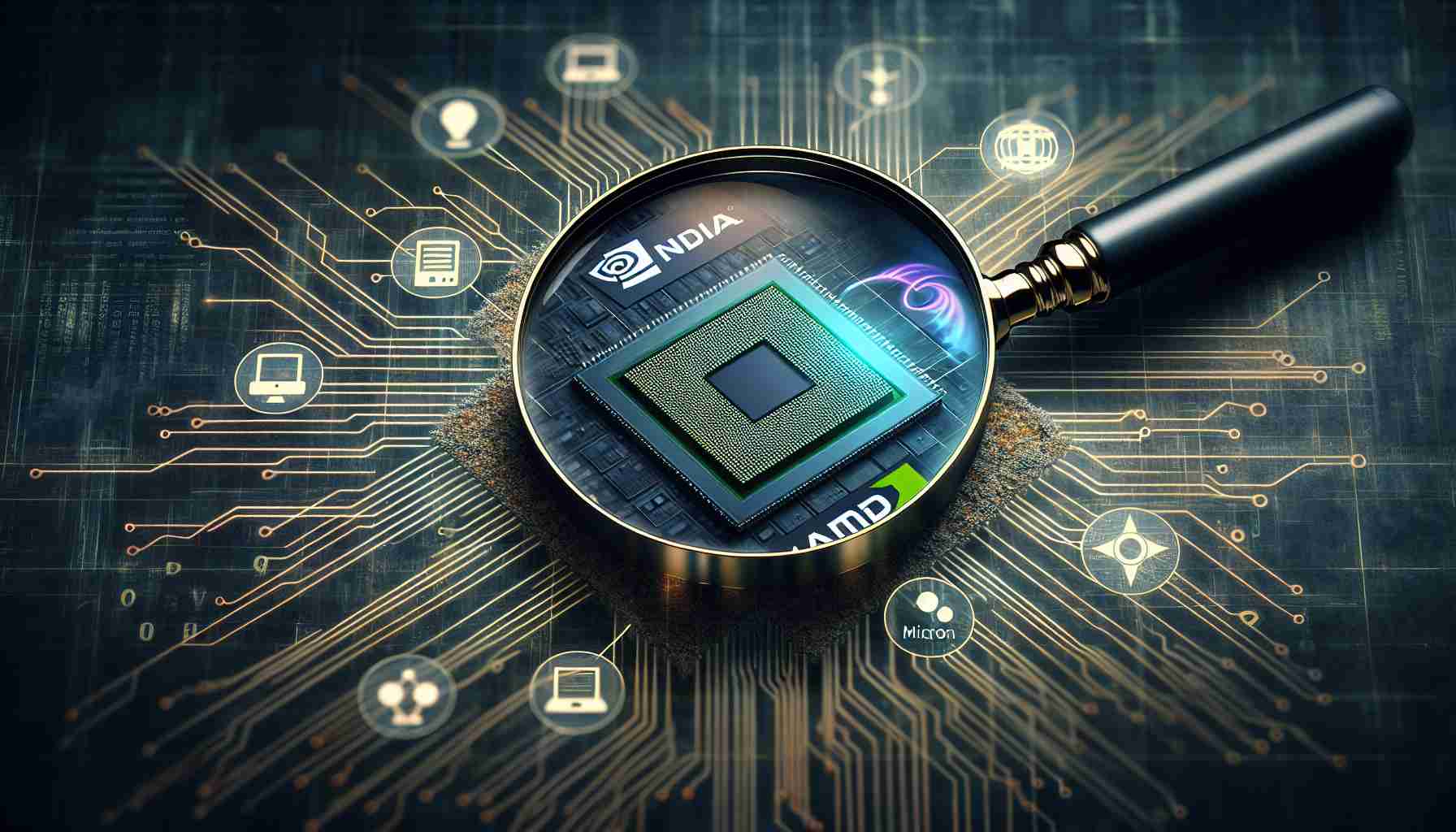- Semiconductor stocks from Nvidia, AMD, and Micron dropped due to competition from Chinese startup DeepSeek.
- DeepSeek’s new approach drastically reduces the cost of training AI models, inciting fears of reduced demand for traditional graphics processors.
- Despite the competition, Meta CEO Mark Zuckerberg emphasizes the strong ongoing demand for AI infrastructure and investment.
- Meta has committed significant funds to ensure leading AI capabilities, signaling confidence in the AI market’s growth.
- DeepSeek’s innovative V3 model demonstrates that advancements can challenge established players, but the necessity for robust AI processing remains.
- Trends suggest a shift towards increased demand for advanced data centers, rather than a decline in the need for AI chips.
In a shocking turn of events, semiconductor giants Nvidia, AMD, and Micron faced a steep decline in their stock prices last week in response to the arrival of a new player in the AI arena: DeepSeek. This Chinese startup has cracked the code to training artificial intelligence (AI) models at a mere fraction of the cost of its U.S. competitors, sparking fears of a demand collapse for essential graphics processors and components.
But hold on—these fears might be exaggerated. Meta Platforms’ CEO Mark Zuckerberg recently highlighted the ongoing necessity for robust AI infrastructure, even in light of these developments. With Meta’s significant investment of $39.2 billion in chips last year, and planned spending soaring to $65 billion this year, the company is poised to push the envelope in AI technology with its upcoming Llama 4 model.
DeepSeek’s innovative V3 model, trained for just $5.6 million, matches the prowess of OpenAI’s top models while the startup ingeniously bypasses the latest GPUs that Nvidia and AMD provide. By leveraging advanced software techniques like model distillation and more efficient data processing, DeepSeek challenges the status quo.
However, as Zuckerberg indicated, the demand for AI processing power remains strong. Potential shifts from training to inference could lead to a heightened need for cutting-edge data centers. This evolving landscape suggests that investors in Nvidia, AMD, and Micron might find themselves still riding high on the AI wave.
In the fast-paced realm of technology, the takeaway is clear: while competition intensifies, the chips that power AI are far from obsolete. Investors can take heart—this revolution is just beginning.
The AI Race Heats Up: Insights into the Semiconductor Landscape
The Evolving Competition in AI and Semiconductor Markets
In the rapidly changing world of artificial intelligence (AI) and semiconductors, recent developments have sent shockwaves through leading companies like Nvidia, AMD, and Micron. The entrance of the Chinese startup DeepSeek into the AI scene, known for its cost-effective model training, has brought both challenges and opportunities for established players. Here’s an in-depth look at the current market forecasts, trends, and implications for stakeholders in this dynamic industry.
Market Forecasts
The AI chip market is projected to exceed $100 billion by 2027, driven by burgeoning demand in various sectors, including healthcare, automotive, and finance. The rise of innovative startups like DeepSeek indicates a shift towards cost efficiency, prompting established firms to innovate and adapt in order to maintain market leadership.
Pros and Cons of New Entrants
– Pros:
– Cost Efficiency: New players like DeepSeek are pushing down costs for training AI models.
– Innovation Burst: Increased competition may lead to faster innovation cycles and improvements across the board.
– Cons:
– Market Uncertainty: Established firms may struggle to adapt to rapid changes, impacting stock performance.
– Price Wars: Companies may engage in aggressive pricing strategies that could hurt profitability.
Current Trends and Insights
The demand for AI infrastructure is robust, as highlighted by Meta Platforms’ significant investment plans. The company’s expected spending of $65 billion this year underscores a trend among tech giants to invest heavily in AI capabilities.
Moreover, model distillation and efficient data processing techniques are becoming mainstream, enabling even startups to remain competitive against seasoned companies with established technologies.
Innovations and Limitations
DeepSeek’s V3 model exemplifies innovative approaches to AI development, but it also raises questions regarding scalability and the reliability of non-traditional hardware. This model, trained for approximately $5.6 million, demonstrates the potential for innovative software solutions to leapfrog traditional hardware limitations.
While the cost advantages are compelling, the limitations of such approaches include possible constraints in performance when scaling for larger enterprise applications, where established players may still hold an edge.
Key Questions about the Market
1. How will DeepSeek’s technology impact the future of AI training?
– DeepSeek’s ability to train robust AI models cheaply places pressure on incumbents, potentially leading them to innovate further. If successful, it may establish a new baseline for AI training costs across the industry.
2. Will the established semiconductor firms adapt to the rising competition?
– Companies like Nvidia and AMD are investing heavily in R&D and may pivot their business strategies to focus on enhanced performance and specialized AI capabilities, thus preserving their market share.
3. What implications might the rise of new entrants have on investors?
– While initial stock declines create concerns, opportunities for growth remain. Investors should focus on companies’ adaptability and strategic investments into AI infrastructure that will support long-term AI demand.
Conclusion
As AI technology continues to advance, both new entrants and established semiconductor giants will need to navigate a complex landscape characterized by competition and rapid innovation. The current shifts may actually invigorate the market, leading to more resilient and adaptable players equipped to handle evolving demands.
For more comprehensive insights into the semiconductor industry and AI advancements, check out Forbes for ongoing updates and analysis.






















